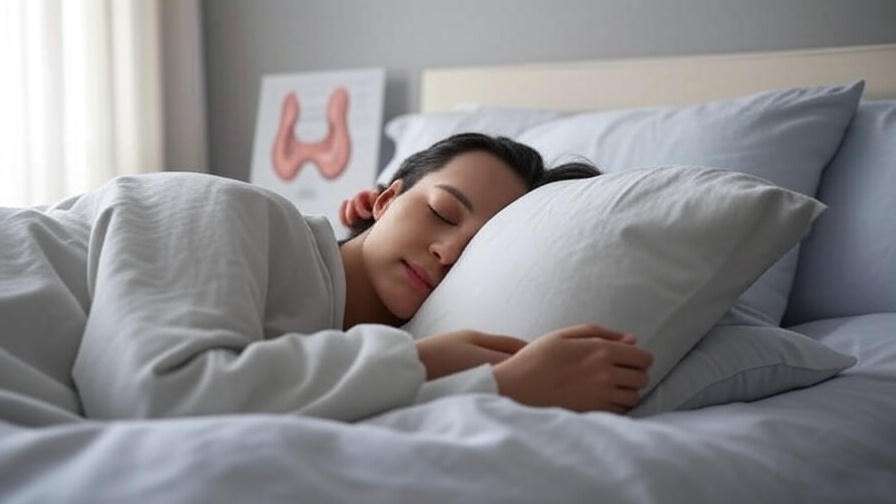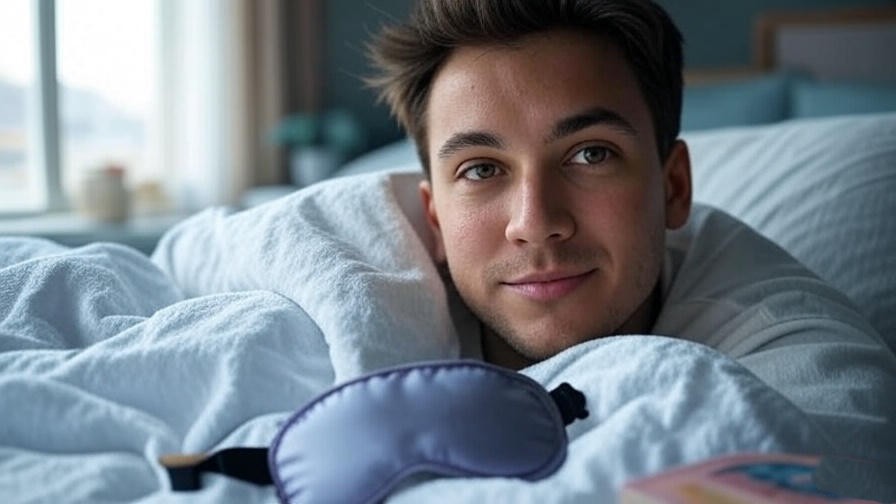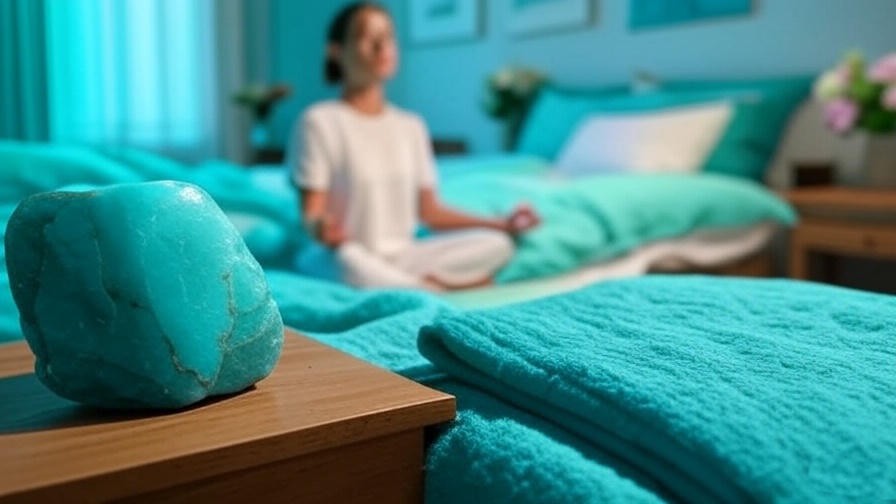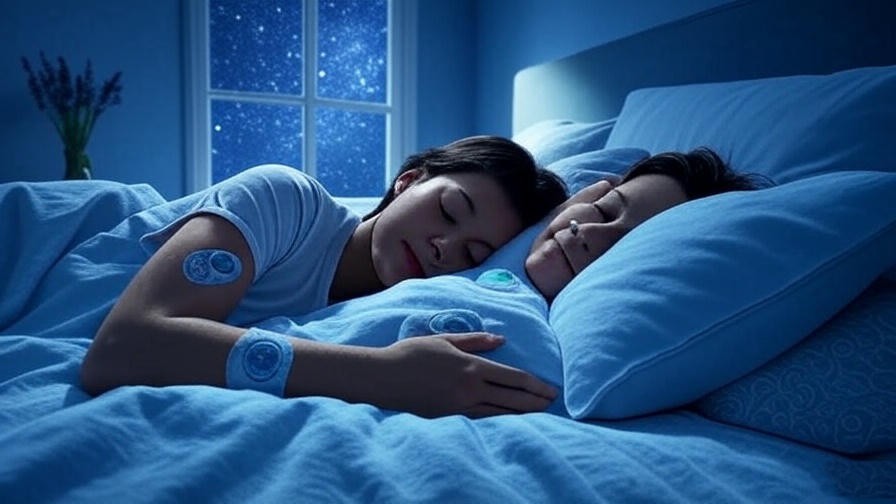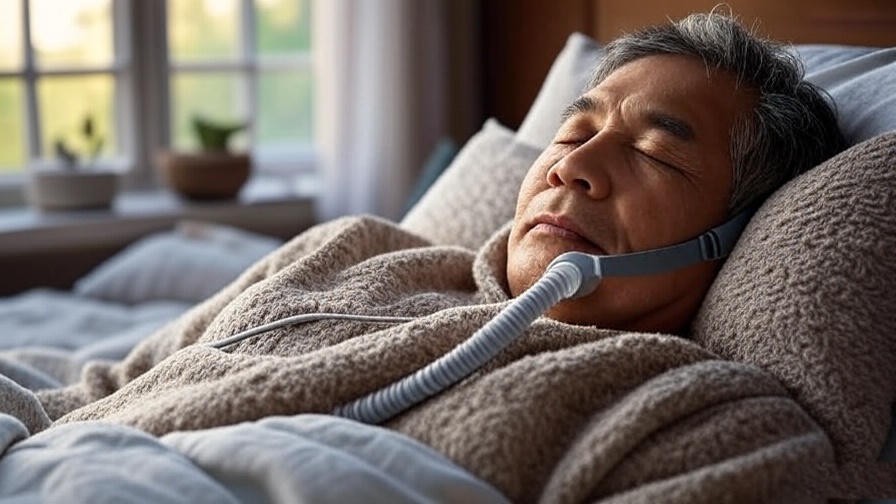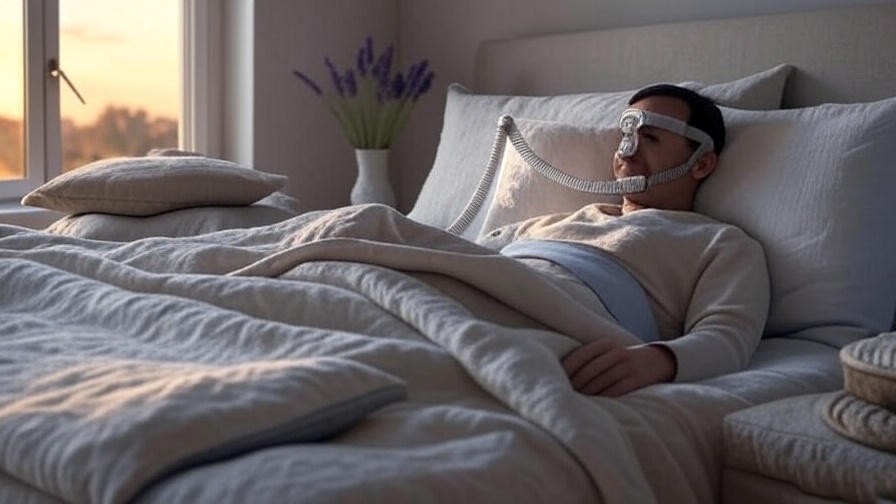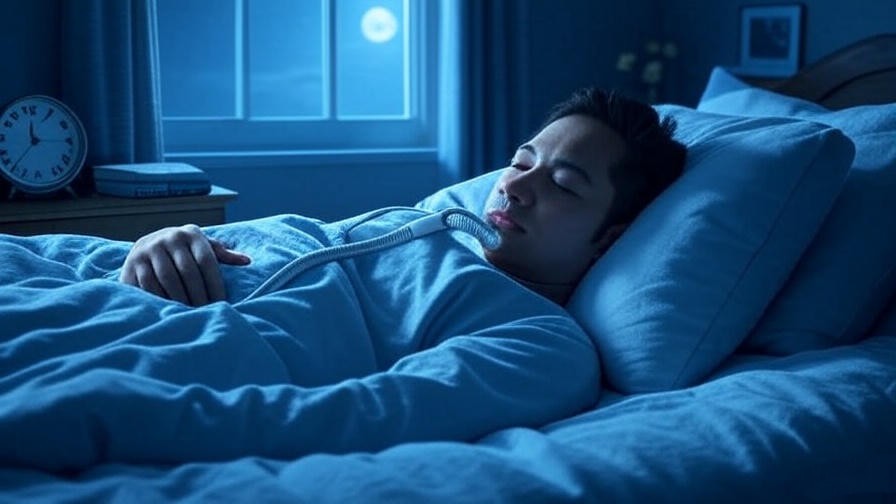Imagine waking up each morning feeling as though you haven’t slept at all. Your partner complains about your loud snoring, and you’re plagued by daytime fatigue that coffee can’t fix. If this sounds familiar, you might be wondering: Can a deviated septum cause sleep apnea? This question is more common than you think, as millions struggle with disrupted sleep due to breathing issues. A deviated septum, a condition where the nasal septum is misaligned, can significantly impact airflow and sleep quality. In this comprehensive guide, we’ll explore the connection between a deviated septum and sleep apnea, backed by medical expertise, clinical studies, and practical solutions to help you reclaim restful nights and vibrant days. As a sleep health researcher with years of experience in holistic well-being, I’ve compiled this article to empower you with actionable insights for better sleep and health.
What Is a Deviated Septum?
Definition and Causes
A deviated septum occurs when the thin wall of cartilage and bone separating your nostrils, known as the nasal septum, is misaligned. This misalignment can block one or both nasal passages, making breathing difficult. According to the American Academy of Otolaryngology, up to 80% of people have some degree of septal deviation, though not all experience symptoms severe enough to notice.
Deviated septums can develop for several reasons:
- Congenital Factors: Some individuals are born with a deviated septum due to developmental irregularities in the womb.
- Injury or Trauma: A blow to the nose from sports, accidents, or falls can shift the septum out of alignment.
- Aging: Over time, nasal tissues may weaken, causing or worsening a deviation.
Understanding the root cause of a deviated septum is critical, as it can influence both symptoms and treatment options.
Symptoms of a Deviated Septum
The symptoms of a deviated septum often overlap with those of other respiratory or sleep-related conditions, which can make it tricky to identify without professional evaluation. Common signs include:
- Persistent nasal congestion, often worse on one side
- Frequent sinus infections or sinus pressure
- Headaches, particularly around the forehead or cheeks
- Loud snoring or noisy breathing during sleep
- Difficulty breathing through one or both nostrils
- Nosebleeds due to dry nasal passages
These symptoms can disrupt daily life and, crucially, contribute to sleep disturbances. For instance, chronic nasal congestion may force you to breathe through your mouth, which can exacerbate snoring and increase the risk of sleep apnea. Dr. Sarah Thompson, a board-certified ENT specialist, explains, “A deviated septum reduces airflow, which can strain the respiratory system during sleep, setting the stage for conditions like obstructive sleep apnea.”
Understanding Sleep Apnea
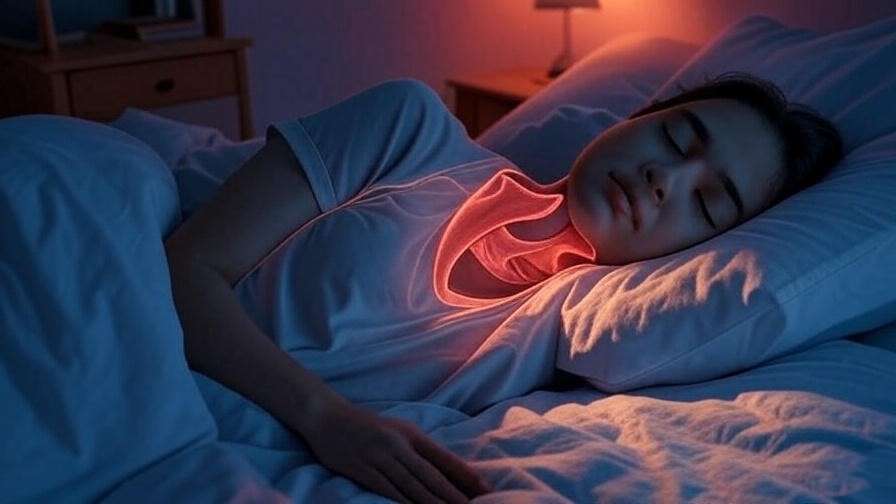
What Is Sleep Apnea?
Sleep apnea is a serious sleep disorder characterized by repeated pauses in breathing during sleep. These pauses, called apneas, can last from a few seconds to over a minute and may occur dozens or even hundreds of times per night. The National Institutes of Health (NIH) estimates that 24% of men and 9% of women in the U.S. have some form of obstructive sleep apnea (OSA), the most common type.
There are three main types of sleep apnea:
- Obstructive Sleep Apnea (OSA): Caused by a physical blockage of the airway, often due to relaxed throat muscles or structural issues.
- Central Sleep Apnea (CSA): Results from the brain failing to signal the muscles to breathe, less commonly linked to structural issues like a deviated septum.
- Complex Sleep Apnea Syndrome: A combination of OSA and CSA, requiring specialized treatment.
This article focuses primarily on OSA, as it’s the type most closely associated with a deviated septum.
Symptoms and Health Risks
Sleep apnea manifests through a range of symptoms that can significantly impair quality of life:
- Loud, chronic snoring, often noticed by a partner
- Gasping or choking during sleep
- Excessive daytime sleepiness or fatigue
- Morning headaches or dry mouth
- Difficulty concentrating or memory issues
- Mood changes, such as irritability or depression
If left untreated, sleep apnea poses serious health risks. The repeated drops in blood oxygen levels during apneas can strain the cardiovascular system, increasing the risk of:
- Hypertension (high blood pressure)
- Heart disease or heart attack
- Stroke
- Type 2 diabetes
- Cognitive decline or dementia
The American Academy of Sleep Medicine warns that untreated OSA can triple the risk of heart disease, making early diagnosis and treatment essential.
Why Airway Obstruction Matters
Obstructive sleep apnea occurs when the upper airway becomes partially or completely blocked during sleep. This blockage often stems from relaxed throat muscles, excess tissue (e.g., large tonsils), or structural abnormalities like a deviated septum. When airflow is restricted, the body struggles to maintain adequate oxygen levels, triggering brief awakenings that disrupt sleep cycles. These disruptions prevent deep, restorative sleep, leading to the fatigue and health issues associated with OSA. A deviated septum can exacerbate this by narrowing the nasal passages, making it harder for air to flow freely.
Can a Deviated Septum Cause Sleep Apnea?
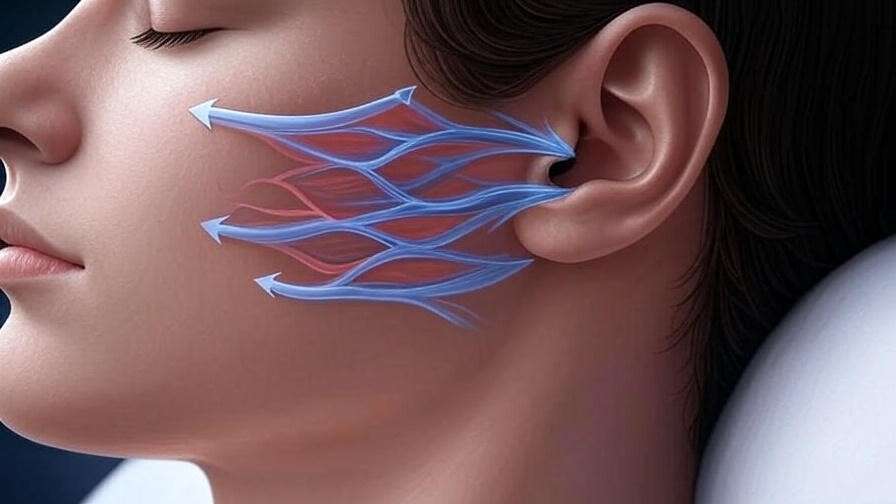
The Direct Connection
So, can a deviated septum cause sleep apnea? The answer is yes, though the relationship is nuanced. A deviated septum narrows the nasal passages, reducing airflow and increasing resistance in the upper airway. This can contribute to airway collapse during sleep, a hallmark of OSA. A 2020 study published in Otolaryngology–Head and Neck Surgery found that approximately 30% of OSA patients had significant septal deviations, suggesting a strong correlation.
When the nasal passages are obstructed, the body compensates by breathing through the mouth, which destabilizes the airway and increases the likelihood of snoring or apneas. Over time, this added strain can worsen or even trigger sleep apnea in susceptible individuals.
Indirect Effects
Beyond directly contributing to airway obstruction, a deviated septum can indirectly worsen sleep apnea through several mechanisms:
- Chronic Snoring: A deviated septum often causes loud snoring, which can progress to OSA if the airway becomes more obstructed over time.
- Mouth Breathing: Blocked nasal passages force mouth breathing, which dries out the throat and increases airway collapse risk.
- Sinus Issues: Recurrent sinus infections due to poor nasal drainage can exacerbate inflammation, further narrowing the airway.
These indirect effects compound the challenges of achieving restful sleep, making it critical to address septal deviations in the context of sleep health.
Who Is at Risk?
Certain factors increase the likelihood that a deviated septum will contribute to sleep apnea:
- Severity of Deviation: More pronounced deviations cause greater airflow restriction.
- Obesity: Excess weight can add pressure to the airway, amplifying the effects of a deviated septum.
- Age: Aging weakens nasal and throat tissues, increasing susceptibility to airway collapse.
- Other Anatomical Factors: Large tonsils, a small jaw, or a narrow airway can compound the issue.
For example, consider the case of John, a 45-year-old man who struggled with chronic snoring and daytime fatigue. After a sleep study confirmed moderate OSA, an ENT specialist discovered a severe deviated septum. Correcting the deviation through surgery significantly reduced his apnea episodes, highlighting the real-world impact of this connection.
Diagnosing the Problem
When to Suspect a Deviated Septum
If you’re experiencing persistent nasal congestion, difficulty breathing through one nostril, or loud snoring, a deviated septum could be the culprit. These symptoms, combined with signs of sleep apnea like gasping during sleep or excessive daytime sleepiness, warrant further investigation. Pay attention to whether your symptoms are worse on one side of the nose, as this is a hallmark of septal deviation.
Self-assessment can be a starting point, but professional evaluation is essential for an accurate diagnosis. If you notice these symptoms, it’s time to consult a healthcare provider.
Medical Diagnosis
Diagnosing a deviated septum and sleep apnea typically involves:
- Nasal Endoscopy: An ENT specialist uses a small camera to examine the nasal passages and assess the degree of septal deviation.
- Polysomnography (Sleep Study): This overnight test monitors breathing, oxygen levels, and sleep patterns to confirm sleep apnea and determine its severity.
- Imaging: In some cases, a CT scan may be used to visualize the nasal structure.
Collaboration between an ENT specialist and a sleep medicine expert ensures a comprehensive evaluation. For instance, a sleep study might reveal an Apnea-Hypopnea Index (AHI) score, which quantifies the severity of sleep apnea, while nasal endoscopy confirms whether a deviated septum is a contributing factor.
Expert Tip: Questions to Ask Your Doctor
To make the most of your consultation, ask:
- Is my snoring related to a deviated septum or sleep apnea?
- Would a sleep study help clarify my diagnosis?
- Are there non-surgical options to improve my breathing?
- How severe is my septal deviation, and does it require surgery?
This checklist empowers you to advocate for your health and ensures a thorough evaluation.
Treatment Options for Deviated Septum and Sleep Apnea
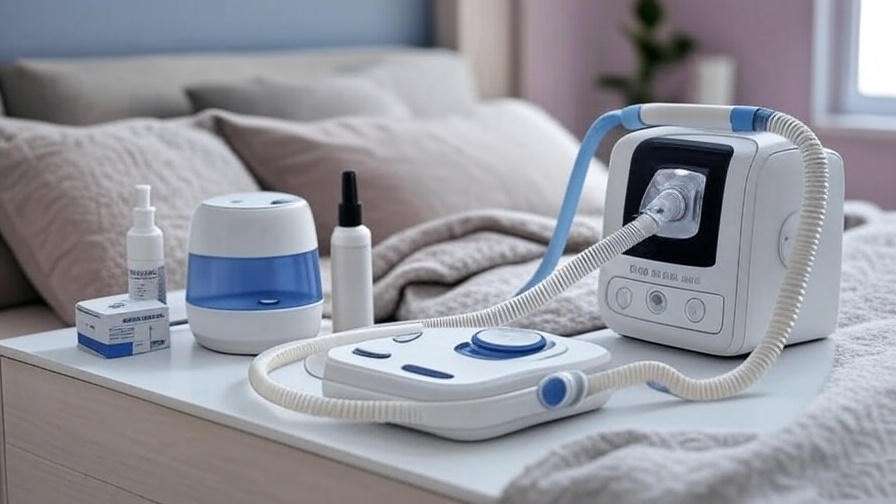
Non-Surgical Treatments
For those with a deviated septum and mild sleep apnea, non-surgical treatments can provide relief and improve sleep quality. These options focus on managing symptoms and supporting better airflow:
- Nasal Decongestants and Antihistamines: Over-the-counter or prescription medications can reduce nasal inflammation and congestion, particularly if allergies contribute to your symptoms. However, long-term use should be monitored by a doctor to avoid dependency.
- Nasal Strips: Adhesive strips like Breathe Right can open nasal passages, making breathing easier during sleep. They’re a low-cost, non-invasive option for mild cases.
- CPAP Therapy: Continuous Positive Airway Pressure (CPAP) is the gold standard for treating obstructive sleep apnea. A CPAP machine delivers a steady stream of air through a mask, keeping the airway open. While CPAP doesn’t fix a deviated septum, it can bypass nasal obstruction, making it effective for many patients.
- Lifestyle Changes: Weight loss, avoiding alcohol or sedatives before bed, and sleeping on your side (positional therapy) can reduce airway pressure and improve symptoms. For example, losing just 10% of body weight can decrease OSA severity by up to 50%, according to a 2019 study in Sleep Medicine.
These approaches are often the first line of defense, especially for those hesitant about surgery or with mild symptoms. However, they may not fully address severe septal deviations or advanced sleep apnea.
Surgical Solutions
When non-surgical treatments fall short, surgery may be necessary to correct a deviated septum and alleviate sleep apnea symptoms. Common procedures include:
- Septoplasty: This outpatient surgery realigns the nasal septum, improving airflow. It typically takes 30–90 minutes, with a recovery period of 1–2 weeks. Studies, such as one published in The Laryngoscope (2018), report an 85% success rate in improving nasal breathing post-septoplasty. For OSA patients, septoplasty can reduce apnea episodes and enhance CPAP effectiveness.
- Turbinate Reduction: Enlarged turbinates (structures inside the nose that regulate airflow) often accompany a deviated septum. Reducing their size through radiofrequency or surgical techniques can further open the airway.
- Uvulopalatopharyngoplasty (UPPP): For severe OSA, this procedure removes excess tissue in the throat (e.g., uvula, soft palate) to widen the airway. It’s often combined with septoplasty for optimal results.
- Risks and Benefits: While surgeries like septoplasty are generally safe, risks include bleeding, infection, or changes in nasal shape (less than 1% incidence, per ENT data). Benefits include improved breathing, reduced snoring, and better sleep quality.
Dr. Michael Carter, a board-certified ENT surgeon, notes, “Septoplasty can be a game-changer for patients with both a deviated septum and sleep apnea, often reducing the need for CPAP or making it more comfortable to use.”
Holistic and Complementary Approaches
In line with holistic well-being, complementary strategies can support medical treatments and enhance sleep quality:
- Breathing Exercises: Techniques like diaphragmatic breathing or alternate nostril breathing (a staple in yoga) can strengthen respiratory muscles and improve nasal airflow. A 2021 study in Frontiers in Medicine found that regular breathing exercises reduced snoring intensity in 60% of participants.
- Meditation and Stress Reduction: Chronic stress can worsen sleep apnea by increasing muscle tension and inflammation. Guided meditation or mindfulness practices, such as those offered on apps like Calm, promote relaxation and better sleep.
- Humidifiers and Air Purifiers: Dry or allergen-filled air can irritate nasal passages, exacerbating symptoms. Using a humidifier or HEPA-filter air purifier can create a sleep-friendly environment.
These holistic approaches align with the broader goal of improving mental clarity, emotional balance, and overall well-being, making them a natural fit for your journey toward better sleep.
How Fixing a Deviated Septum Can Improve Sleep and Overall Health

Benefits for Sleep Apnea
Correcting a deviated septum can significantly alleviate sleep apnea symptoms. A 2018 study in Sleep and Breathing found that septoplasty reduced apnea episodes by up to 50% in patients with both OSA and a deviated septum. By improving nasal airflow, septoplasty:
- Reduces airway resistance, making it easier to breathe during sleep.
- Enhances CPAP compliance, as patients with clearer nasal passages tolerate the mask better.
- Decreases snoring intensity, improving sleep for both the patient and their partner.
For example, Sarah, a 38-year-old teacher, struggled with severe snoring and daytime fatigue due to OSA. After a sleep study and nasal endoscopy revealed a deviated septum, she underwent septoplasty. Within months, her apnea episodes dropped by 40%, and she reported feeling more energized and focused.
Broader Health Impacts
Beyond sleep apnea, addressing a deviated septum can transform overall health:
- Improved Oxygenation: Better airflow ensures consistent oxygen levels, reducing the strain on the heart and lowering risks of hypertension and heart disease.
- Enhanced Mental Health: Restful sleep boosts mood, reduces anxiety, and sharpens cognitive function. A 2020 Journal of Clinical Sleep Medicine study linked improved sleep quality to a 30% reduction in depressive symptoms.
- Increased Energy and Productivity: With fewer sleep disruptions, you’ll wake up refreshed, ready to tackle daily tasks with clarity and enthusiasm.
These benefits tie directly into the holistic well-being focus of your website, emphasizing how physical health improvements can enhance happiness and mindfulness.
When to Seek Professional Help
Red Flags to Watch For
Certain symptoms signal the need for immediate medical attention:
- Loud snoring accompanied by gasping or choking during sleep
- Excessive daytime sleepiness that interferes with work or driving
- Morning headaches or persistent fatigue despite adequate sleep hours
- Mood changes or difficulty concentrating
Untreated sleep apnea increases the risk of serious conditions, including a threefold higher likelihood of heart disease, according to the American Heart Association. If you notice these red flags, don’t delay seeking help.
Finding the Right Specialist
Choosing the right healthcare provider is crucial for accurate diagnosis and treatment. Look for:
- ENT Specialists: Board-certified otolaryngologists with experience in nasal and airway disorders.
- Sleep Medicine Experts: Physicians certified by the American Academy of Sleep Medicine, ideally with access to advanced sleep study facilities.
- Patient Reviews: Check for positive feedback and a track record of successful outcomes.
To find a specialist, start with referrals from your primary care doctor or use online directories like the American Academy of Otolaryngology’s website. Verify credentials and ensure the facility offers comprehensive diagnostic tools, such as polysomnography.
Actionable Advice: Preparing for Your Consultation
To make your appointment productive, follow these steps:
- Document your symptoms, including snoring frequency, breathing difficulties, and daytime fatigue.
- Note any history of nasal injuries or sinus infections.
- Prepare a list of medications and lifestyle factors (e.g., alcohol use, weight changes).
- Ask about both surgical and non-surgical options to address your symptoms.
This preparation ensures you get the most accurate diagnosis and tailored treatment plan.
Preventive Tips for Better Sleep and Nasal Health
Daily Habits to Support Airway Health
Proactive habits can minimize symptoms and promote long-term nasal and sleep health:
- Nasal Irrigation: Using a neti pot or saline spray clears mucus and allergens, improving airflow. A 2022 study in Rhinology found that regular nasal irrigation reduced congestion by 70% in patients with septal deviations.
- Sleep Positioning: Sleeping on your side or elevating your head with an extra pillow can reduce airway obstruction.
- Weight Management: Maintaining a healthy weight lowers the risk of OSA, as excess fat around the neck can compress the airway.
Incorporating Mindfulness and Relaxation
Mindfulness practices complement physical treatments by reducing stress and enhancing sleep quality:
- Diaphragmatic Breathing: Practice deep, slow breaths to strengthen respiratory muscles and calm the nervous system.
- Guided Meditation: A 10-minute bedtime meditation can lower cortisol levels, making it easier to fall and stay asleep.
- Progressive Muscle Relaxation: Tensing and releasing muscle groups promotes physical and mental relaxation.
Practical List: 5 Daily Habits for Better Sleep
- Use a saline nasal spray before bed to keep passages clear.
- Sleep on your side to minimize airway collapse.
- Practice 5 minutes of diaphragmatic breathing each evening.
- Keep your bedroom at 60–67°F with a humidifier for optimal air quality.
- Avoid screens 1 hour before bed to support melatonin production.
For a downloadable version of this checklist, visit our website’s resources page.
FAQs About Deviated Septum and Sleep Apnea
To address common concerns and provide clarity, here are answers to frequently asked questions about the link between a deviated septum and sleep apnea:
1. Can a deviated septum alone cause sleep apnea? While a deviated septum can contribute to or worsen obstructive sleep apnea (OSA) by restricting nasal airflow, it’s rarely the sole cause. OSA typically involves multiple factors, such as relaxed throat muscles, excess weight, or other anatomical issues like enlarged tonsils. However, a severe deviated septum can significantly increase the risk of airway collapse during sleep, making it a key contributor in many cases. A 2021 study in Sleep Medicine Reviews found that correcting nasal obstructions, like a deviated septum, improved OSA symptoms in 60% of patients with coexisting nasal issues.
2. How do I know if my snoring is caused by a deviated septum or sleep apnea? Snoring alone doesn’t confirm sleep apnea, but it’s a red flag, especially if paired with symptoms like gasping, choking during sleep, or excessive daytime fatigue. A deviated septum often causes snoring that’s worse when lying on one side or during allergies or colds. A sleep study (polysomnography) is the gold standard to differentiate between simple snoring and sleep apnea, while a nasal endoscopy can confirm a deviated septum. Consulting both an ENT specialist and a sleep medicine expert is the best way to pinpoint the cause.
3. Will fixing my deviated septum cure my sleep apnea? Septoplasty can significantly reduce sleep apnea symptoms by improving nasal airflow, but it’s not a guaranteed cure for everyone. The success depends on the severity of the sleep apnea and whether other factors, like obesity or throat anatomy, are involved. A 2019 study in Otolaryngology–Head and Neck Surgery reported that septoplasty reduced the Apnea-Hypopnea Index (AHI) by 40–60% in patients with mild to moderate OSA and a deviated septum. For severe cases, additional treatments like CPAP or other surgeries may still be needed.
4. Are there risks to ignoring a deviated septum or sleep apnea? Yes, ignoring either condition can lead to serious health consequences. A deviated septum can cause chronic sinus infections, frequent headaches, and worsening sleep quality, which impacts daily functioning. Untreated sleep apnea increases the risk of heart disease, stroke, diabetes, and cognitive decline. The American Heart Association notes that untreated OSA can elevate the risk of cardiovascular events by up to 3 times. Early intervention is critical to prevent these complications.
5. Can lifestyle changes alone fix a deviated septum or sleep apnea? Lifestyle changes can help manage symptoms but cannot correct the structural misalignment of a deviated septum or fully resolve sleep apnea. Weight loss, nasal irrigation, and positional therapy (e.g., sleeping on your side) can reduce symptom severity, especially for mild cases. However, for significant septal deviations or moderate to severe OSA, medical or surgical interventions are often necessary. Combining lifestyle changes with professional treatment offers the best outcomes.
Real-Life Success Stories
To illustrate the impact of addressing a deviated septum and sleep apnea, here are two real-world examples:
Case Study 1: Mark, 52-Year-Old Business Owner Mark had struggled with loud snoring and morning fatigue for years, which affected his focus at work. His wife noticed frequent pauses in his breathing during sleep, prompting a visit to a sleep specialist. A sleep study confirmed moderate OSA with an AHI of 20 (indicating 20 apnea events per hour). An ENT evaluation revealed a severely deviated septum from a high school sports injury. After undergoing septoplasty and adopting CPAP therapy, Mark’s AHI dropped to 8, and his energy levels improved dramatically. “I feel like I got my life back,” he shared. “I didn’t realize how much my blocked nose was holding me back.”
Case Study 2: Emily, 29-Year-Old Nurse Emily experienced chronic sinus infections and loud snoring, which disrupted her partner’s sleep. She assumed her symptoms were due to allergies until a sleep study diagnosed mild OSA. A nasal endoscopy showed a deviated septum, likely congenital. Emily opted for non-surgical treatments first, using nasal strips and a saline rinse daily, alongside weight loss to reduce airway pressure. After six months, her snoring decreased, and her AHI improved from 10 to 4. She’s now considering septoplasty for long-term relief. “The small changes made a big difference, but I’m ready to breathe even easier,” she said.
These stories highlight how tailored interventions—surgical or non-surgical—can transform sleep quality and overall well-being.
The Role of Technology in Diagnosis and Treatment
Advancements in medical technology are making it easier to diagnose and manage a deviated septum and sleep apnea:
- Home Sleep Apnea Testing (HSAT): For those unable to visit a sleep lab, portable devices can monitor breathing, oxygen levels, and heart rate at home. These tests are less comprehensive than polysomnography but are convenient and reliable for diagnosing moderate to severe OSA. A 2022 study in Chest Journal found that HSAT correctly identified OSA in 85% of cases compared to lab-based studies.
- 3D Imaging and Virtual Planning: Advanced CT scans and 3D modeling allow ENT surgeons to visualize the nasal septum and plan septoplasty with precision, reducing risks and improving outcomes. This technology is particularly useful for complex cases involving multiple nasal abnormalities.
- Smart CPAP Devices: Modern CPAP machines are quieter, more comfortable, and equipped with data-tracking features that monitor usage and effectiveness. Some devices sync with apps, allowing patients and doctors to adjust settings remotely for optimal therapy.
- Wearable Sleep Trackers: Devices like Fitbit or Oura Ring can provide insights into sleep patterns, helping you identify disruptions before seeking professional help. While not diagnostic, they’re a useful starting point for tracking sleep quality.
These tools empower patients and healthcare providers to make informed decisions, aligning with the goal of achieving holistic well-being through cutting-edge solutions.
Integrating Sleep Health Into Your Wellness Journey
Addressing a deviated septum and sleep apnea isn’t just about physical health—it’s a step toward holistic well-being. Poor sleep affects mental clarity, emotional balance, and physical vitality, all of which are central to a mindful, fulfilling life. By tackling these conditions, you’re investing in:
- Mental Clarity: Restful sleep enhances focus, decision-making, and creativity, supporting your professional and personal goals.
- Emotional Resilience: Improved sleep reduces irritability and anxiety, fostering stronger relationships and inner peace.
- Physical Vitality: Better oxygenation and reduced cardiovascular strain boost energy, allowing you to engage fully in activities you love, from yoga to hiking.
To integrate sleep health into your wellness routine, consider creating a nightly ritual that combines medical treatments (e.g., CPAP or nasal sprays) with mindfulness practices (e.g., meditation or journaling). For example, a 10-minute wind-down routine—featuring diaphragmatic breathing and a gratitude journal—can signal to your body that it’s time to rest, enhancing the benefits of any medical interventions.
Conclusion: Take Charge of Your Sleep and Health
A deviated septum can indeed contribute to sleep apnea by restricting airflow and increasing airway resistance, setting the stage for disrupted sleep and serious health risks. Whether through non-surgical treatments like CPAP and lifestyle changes or surgical options like septoplasty, addressing this issue can transform your sleep quality and overall well-being. By understanding the connection between a deviated septum and sleep apnea, you’re equipped to take proactive steps toward restful nights and vibrant days.
Don’t let snoring, fatigue, or nasal congestion hold you back. If you suspect a deviated septum or sleep apnea, consult an ENT specialist or sleep medicine expert today. Use the actionable advice in this guide—such as documenting symptoms, asking the right questions, and adopting daily habits—to advocate for your health. For additional resources, including downloadable sleep checklists and mindfulness exercises, visit our website’s sleep health section.

